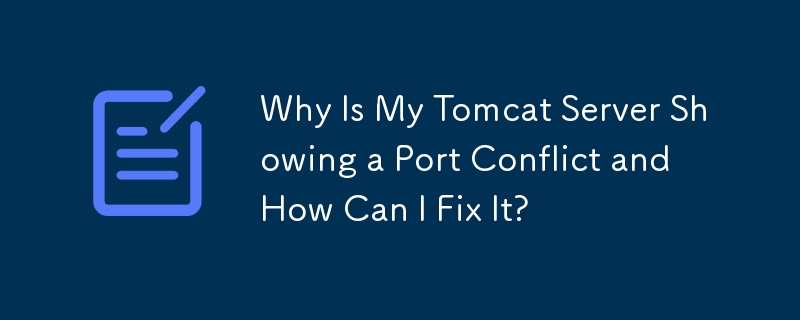

Troubleshooting Tomcat Sever Port Conflict
When attempting to launch a JSP program on Tomcat within Eclipse, you may encounter an error indicating that specific ports, such as 8005, 8080, and 8009, are already in use. This issue can arise if another instance of Tomcat is running or if a system process is utilizing one of these ports.
Cause:
The most likely cause of this error is a conflicting Tomcat instance. This can occur if a previous instance of the server was not properly closed or if an external process is using the designated port.
Solution:
To resolve this error, follow these steps:
Verify if Tomcat is Already Running:
Terminate Other Tomcat Instances:
Disable Tomcat Service (Windows Only):
Configure Different Ports (Optional):
The above is the detailed content of Why Is My Tomcat Server Showing a Port Conflict and How Can I Fix It?. For more information, please follow other related articles on the PHP Chinese website!




